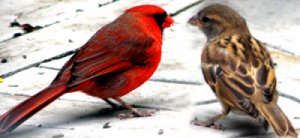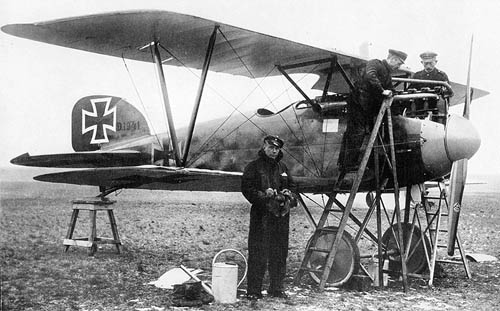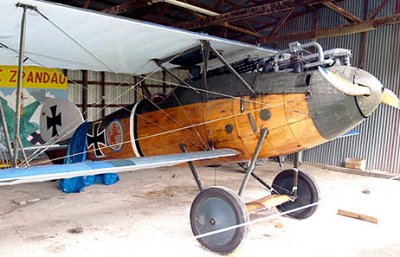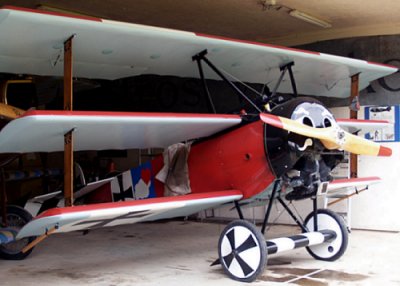Albatros
Today, sparrows, cardinals, and old airplanes. The University of Houston's College of Engineering presents this series about the machines that make our civilization run, and the people whose ingenuity created them.
I thought about sparrows and cardinals when I saw the 2006 movie, Flyboys-- a fictional story based on the WW-I Lafayette Escadrille. I liked it better than the critics did, because I was raised on aerial melodramas like it. The movie people took pains to make the airplanes look authentic -- except for one glaring liberty:
To keep aerial battles understandable, the Germans flew red Fokker triplanes, just like the Red Baron's. Red triplanes meant enemies; dark biplanes meant friends. But the Red Baron didn't get his triplane until late in 1917. He scored only a fourth of his victories in it. In fact, he was one of the few fliers who even liked it. It was slow, tricky to fly, and it had structural problems. Only 320 were made, and it was soon replaced.
A year earlier, the Allies had been suffering a far worse thorn in their side -- an earlier German plane called the Albatros. It was a robust biplane, whose body was covered with brown plywood veneer. (That's why I thought about those hardy, drab sparrows, competing for birdseed with elegant but skittish cardinals.)

The Albatros went through many models and was still in combat, even after the Armistice. As late as 1920, Polish pilots flew late versions against the Russians on the Eastern front.
The WW-I air war was a seesaw affair. At first, Germany's Fokker monoplane ruled the air. Biplanes like the Nieuport 17 and SE-5 gave the battle back to the Allies. Then the Albatros reclaimed German air superiority. By the following spring, they'd become so devastating that Allies talked about Bloody April. Sopwith Camels, then SPADs, finally swung the pendulum back to the Allies. But even then, Albatroses were still a threat.
The Albatros had the most powerful existing airplane engine -- a liquid-cooled, 160 horsepower, Mercedes. Liquid-cooled engines were uncommon and a bit awkward. Pipes carried coolant from the engine in front of the pilot, to a radiator in the wing above him.
Imagine that design nightmare: Within inches of the pilot's head lay all that plumbing, as well as exhaust pipes, machine guns, and struts to hold the top wing. In exchange for that tangle, the pilot got an otherwise clean streamlined airplane.
But then, good design always means compromise; and who likes compromise? The Red Baron cursed his drab Albatros, only to die in his flamboyant triplane. In the end, over 2500 Albatroses were built. Germany even sent a float-plane version to guard her northern coastline. Several of those small Albatros seaplanes were used by the Austro-Hungarian Navy to patrol the Aegean.
And I think how easily we're distracted by glitter. Naturally a dramatic red triplane drew all eyes away from the solid old Albatros, wrapped in its plain brown cloak. Don't I turn away from sparrows when a bright red cardinal lands in my yard? Well, we all do. We do it every time.
I'm John Lienhard, at the University of Houston, where we're interested in the way inventive minds work.
J. Connors, Albatros: Fighters in Action. (illustrations by Don Greer) (Carrollton, TX: Squadron/Signal Publications, Inc., 1981), No. 46.
For more on the Albatros, see: https://en.wikipedia.org/wiki/Albatros_D.III
For more on Fokker Triplanes, see: https://en.wikipedia.org/wiki/Fokker_Dr.I

An Albatros DIII shown in Ernst Udet's autobiography, Mein Fliegerleben.(Berlin: Im Verlag Ullstein, 1935). All other photos by JHL

Replica of the Albatros DVa, Old Rhinebeck Aerodrome

Replica of the Fokker Dr1, triplane, Old Rhinebeck Aerodrome